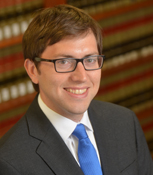Argument analysis: Seeking a recusal rule that the Justices can live with

on Feb 29, 2016 at 6:13 pm
The oral argument in Williams v. Pennsylvania illustrated the difficulty of fashioning recusal rules that are both fair and administrable. Representing petitioner Terrance Williams, attorney Stuart Lev plausibly emphasized that “this is an extreme and rare case.” After all, Williams’s allegations of prosecutorial misconduct had been rejected by a panel that included the very prosecutor who’d approved the capital charge in Williams’s case. But as Justice Samuel Alito observed early and often during the argument, “The problem that is presented by this case is where this constitutional line is going to be drawn.” That problem is extra difficult for the Justices, because any rule they adopted would necessarily apply to themselves. Ironically, constitutional rules regarding judicial conflicts of interest must themselves be fashioned by somewhat conflicted jurists.
Somewhat surprisingly, neither side put forward a clear constitutional test. Instead, both sides of the case argued for standards. Early on, for instance, Lev asserted that the Constitution demands recusal “when the prosecutor has direct personal involvement in a substantial decision in the case, and the issue before the court reflects upon that decision.” But that test calls for judgments about what is a “substantial decision” as well as about what types of claims “reflect upon that decision.” Justice Anthony Kennedy in particular pounced on this point, suggesting that Williams should lose under his own proposed test. The prosecutor’s decision to seek capital charges, after all, didn’t directly relate to the Brady claim that now forms the gist of Williams’s claim. On the “substantial decision” front, Lev agreed that “the signing of the indictment” would not be enough to disqualify, because that decision would have been (in Justice Elena Kagan’s phrase) merely “pro forma.” But Lev expressed approval of different tests, eventually prompting Kagan to remark: “I guess I’m a little bit unclear as to what you’re arguing.” Justice Ruth Bader Ginsburg likewise seemed to push Lev to advocate a bright-line rule: “I thought that your particular position was that a judge cannot sit on any case where, as the district attorney, he signed on to the death penalty.”
For his part, Deputy District Attorney Ronald Eisenberg advocated a “totality of the circumstances” test directed at the probability of bias. That test finds support in the Supreme Court’s recent decision in Caperton v. A.T. Massey Coal Company, Inc. , but it is also clearly unclear. As Alito remarked near the end of the argument: “I really don’t see a clear rule that would encompass this situation, other than a rule that said that a judge [i]s required by the Constitution to recuse in any case in which the judge had personal participation as a prosecutor.” Alito then added: “but that would be a pretty far-reaching rule.” In perhaps his most effective retort, Lev ultimately pointed out that the Court had already embarked on these choppy waters when it found a constitutional duty to recuse in Caperton.
As usual, the Justices asked some interesting hypotheticals to test the various positions. What if the prosecutor-turned-judge’s decision to seek capital punishment had resulted from the mechanical application of a categorical policy, rather than a fact-specific judgment? What if the alleged Brady violation had happened just three years ago, instead of thirty? What if the allegedly biased judge had been serving on a panel of three, or a panel of fifteen? What if the conflicted judge had publicly voted in favor of Williams and even published an opinion advocating that result?
Unsurprisingly, the Justices considered what remedies might be available, thereby suggesting that the merits and the relief might be interlinked. Most significantly, Kagan emphasized the “unsatisfying” nature of Williams’s request to have the case remanded. If the conflicted judge’s presence below biased the decisions of the other judges, then that bias might continue to operate, even after the judge’s departure from the case. As Kagan put it: “if the idea is that one judge can affect a whole panel, which seems right to me, [p]resumably that effect doesn’t go away the moment that we send it back and they have to deal with it again, so [d]on’t they continue to be tainted in the same way?” This line of reasoning led to some psychological speculation, such as about whether judges can discount arguments that they later learn came from a conflicted source. And, making a claim about both psychology and morality, Eisenberg argued that, “if other justices are persuaded by something other than the power of the argument, then they’re not fulfilling their oaths.”
Confirming the oddity of having the Justices fashion a rule that would emphatically apply to their own work, the Justices repeatedly worried about whether the recusal rules would affect themselves and other good-faith judges. In discussing the remedy issue, for instance, Justice Stephen Breyer noted, “Well, this is common in the situation where someone’s appointed to this Court.” More broadly, the Justices predictably worried about creating a recusal rule that might prevent judges with governmental service – perhaps including themselves – from doing their jobs. As Breyer put it: “There are executive branch officials who decide all kinds of things, and, later on, something with their name signed on it comes up.” Breyer suggested that existing ethics rules could deal with this and expressed concerns with constitutionalizing this murky area of law. Eisenberg emphasized this point by noting that “we don’t want to have a situation where the only people who can become judges and sit on cases are people with no prior experience.” But some Justices responded by observing that bright-line recusal rules exist in some jurisdictions and seem not to cause great problems.
Given the decision to grant certiorari and the Court’s willingness to adopt the cloudy standard that it announced in Caperton, a narrow ruling for Williams still seems most likely. But the Court’s ruling might be so narrow as to make that victory mostly symbolic.


